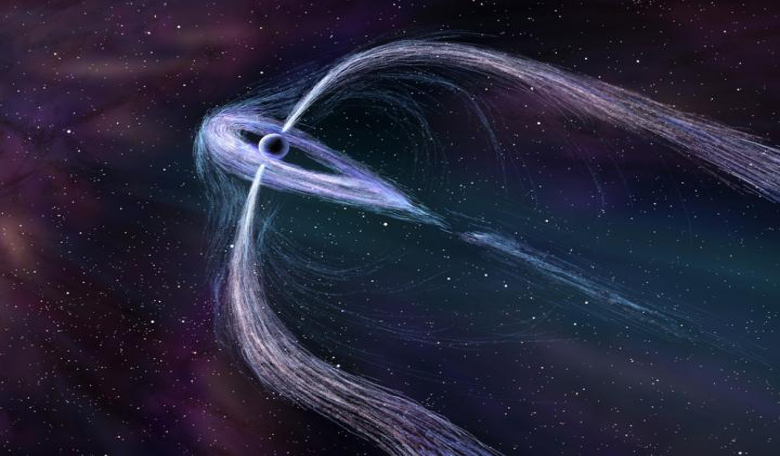Two studies of recently observed pulsars are helping astronomers to understand why some of these objects are only seen to emit pulses of radio waves, while others only emit pulses of high energy gamma rays and it may simply be down to looking at them from a different perspective.
Pulsars are highly magnetised, fast spinning neutron stars – the highly dense remnants leftover from a supernova explosion – that can complete one rotation in less than a couple of seconds. One such object first discovered 10 years ago was found to spin 716 times per second!
Pulsars are identified by beams of radiation that are swept out like the light from a lighthouse as they rapidly rotate and usually, this radiation is confined to either radio waves or gamma-rays with some objects showing only one type of pulse or the other.
"It's not fully understood why there are variations between different pulsars," said Bettina Posselt, senior research associate in astronomy and astrophysics, Penn State. "One of the main ideas here is that pulse differences have a lot to do with geometry – and it also depends on how the pulsar's spin and magnetic axes are oriented with respect to line of sight whether you see certain pulsars or not, as well as how you see them."
Weight is now being added to this theory, as a recent study of two pulsars known as Geminga and B0355+54 have helped to shed light on the distinctive emission signatures of these objects.
By using NASA's Chandra X-ray Observatory, astronomers observed the pulsar wind nebulae (PWN) of Geminga and B0355+54. PWN are donut-shaped rings known as tori that are generated when the energetic particles streaming from the pulsar shoots along the star’s magnetic field, around the pulsar's equatorial plane, and along the spin axis, often sweeping back into long tails as the pulsar ploughs through the interstellar medium.
"This is one of the nicest results of our larger study of pulsar wind nebulae," said Roger W. Romani, professor of physics at Stanford University and principal investigator of the Chandra PWN project. "By making the 3-D structure of these winds visible, we have shown how one can trace back to the plasma injected by the pulsar at the centre. Chandra's fantastic X-ray acuity was essential for this study, so we are happy that it was possible to get the deep exposures that made these faint structures visible."
The two objects in question, Geminga and B0355+54, were key in these observations for one simple reason; Geminga, one of the closest pulsars at only 800 light years away from Earth, has three unusual tails and is radio quiet, meaning that the dominant form of pulse is gamma rays, while B0355+54, one of the brightest radio pulsars fails to show gamma ray emission.
According to Posselt, this might result from Geminga having magnetic poles quite close to the top and bottom of the object, and nearly aligned spin poles, much like Earth, conversely B0355+54 as magnetic poles directly facing the Earth. Because the radio emission occurs near the site of the magnetic poles, the radio waves may point along the direction of the jets, she said. Gamma-ray emission, on the other hand, is produced at higher altitudes in a larger region, allowing the respective pulses to sweep larger areas of the sky.
"For Geminga, we view the bright gamma ray pulses and the edge of the pulsar wind nebula torus, but the radio beams near the jets point off to the sides and remain unseen," Posselt said.
Meanwhile, for B0355+54 “a jet points nearly at us so we detect the bright radio pulses while most of the gamma-ray emission is directed in the plane of the sky and misses the Earth," said Oleg Kargaltsev, assistant professor of physics, George Washington University, who worked on the study on B0355+54. "This implies that the pulsar's spin axis direction is close to our line-of-sight direction and that the pulsar is moving nearly perpendicularly to its spin axis."
Further investigation into Geminga's two long tails and their unusual spectrum have suggested that the particles are accelerated to nearly the speed of light through a process called Fermi acceleration that takes place at the intersection of a pulsar wind and the interstellar material.
Although the explanation for the geometry of Geminga's tails are not yet set in stone, objects such as these make incredible (natural) laboratories for learning about the physics of the fundamental particles of nature in conditions that would be impossible to replicate in a particle accelerator on earth. Continuation of these studies could therefore provide exciting new constraints on the acceleration physics in pulsar wind nebulae and their interaction with the surrounding interstellar medium.











